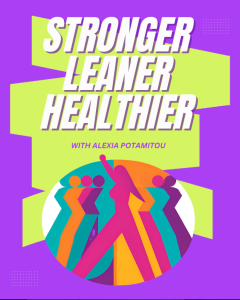
Everyday in my clinical practice, I see clients/ patients trying to lose weight, trying to lower cholesterol and generally trying to “be healthy” by following LOW FAT diets. Unfortunately, this rarely works. Here’s why:
THE SATURATED FAT MYTH
To fully understand this phenomena, we have to go back to the 1970s and Dr. Keys’ Seven Countries Study, which showed an association between saturated fat intake and cardiovascular disease. He showed that countries who consumed more saturated fat had higher rates of heart disease. This has led to the low fat dietary gospel that has been handed out by the medical establishment to this day despite a multitude of evidence to the contrary.
The primary problem with this study is that correlation does not mean causation – an association is very different from saying that eating saturated fat CAUSES heart disease.
In fact, countless studies and reviews have cast doubt on the suggestion that dietary fat intake is strongly correlated with heart disease.
I think one of the main reasons that the low fat diet promoted over the past 30-40 years has not made a significant dent in the prevalence of heart disease is because of what we have replaced saturated fat with: refined carbohydrates and sugar. The evidence that refined carbohydrates and added sugar can be hugely detrimental for your health and drive “modern epidemics” such as Type 2 Diabetes is compelling.
SO, WHAT HAPPENS WHEN YOU EAT A LOW FAT DIET?
First of all, it is important to understand that fat promotes satiety and a feeling of fullness. Therefore, when following low fat diets people tend to replace fat with refined carbohydrates and other starches. This leads to blood sugar imbalances and insulin spikes throughout the day, all of which lead to increased weight gain, hunger cravings and increased caloric intake.
I see many patients who have their “healthy” bowl of sugar-filled cereal or their two slices of toast before they leave for work in the morning. Three hours later, they’re sitting at their desk, they feel hungry and in need of a quick fix. They are forced to grab a quick sugar loaded snack to give them energy and the cycle continues all day long (think about the 3pm slump!). This is a classic example of the insulin highs and the blood sugar lows that occur with the typical low fat diet.
This blood sugar roller coaster can also apply when eating so-called healthy “zero percent fat” carbohydrates such as white rice and potatoes. That is why we need to keep emphasizing the need of consuming more slow-release carbohydrate sources in our diet like oats, quinoa, wild rice, bulgar, whole-wheat past, buckwheat and millet.
SO, WHAT SHOULD WE DRAW FROM ALL THIS?
It’s simple: it is not fat making us fat! It is the way we live and eat! I would urge you to start looking at fat and sugar in a different way. Think about the quality of the food that you are eating rather than concentrating solely on the fat content (or the calorie content) – more of that in a later blog!
When it comes to eating fat, concentrate on natural, healthy forms of fat such as avocados, nuts (choose almonds, walnuts, brazil nuts and cashews), fatty fish (like salmon, tuna, sardines and mackerel) if you do eat fish, extra-virgin olive oil, plant-based saturated fat such as coconut oil, and spores are an excellent source of fat. I have always believed in full fat dairy as well even though I was thought otherwise by my American professors when I was a student- simply because there is nothing like a natural product.
However, please make sure that you avoid ALL trans fats – no exceptions! These kinds of fats are found in fast foods, snack food and margarines and are most definitely associated with an increased risk of cardiovascular disease.
As a society, we spend a lot of wasted energy worrying about the amount of saturated fat in our diet. We should be more concerned about avoiding the real culprits for bad heath – refined sugars and trans fats.


